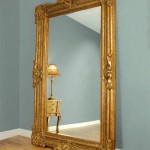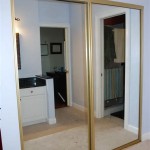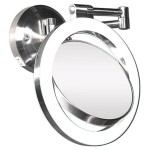Can Convex Mirrors Produce Enlarged Images?
Convex mirrors, characterized by their outwardly curved reflecting surface, are renowned for their wide field of view. This characteristic makes them invaluable in various applications, from security mirrors in shops to passenger-side mirrors in vehicles. However, the images they produce differ significantly from those formed by plane or concave mirrors. A common question arises regarding their magnification capabilities: can convex mirrors produce enlarged images?
The answer, simply put, is no. Convex mirrors cannot produce enlarged images under normal circumstances. They always produce images that are smaller than the object being reflected. This phenomenon is a direct consequence of the diverging nature of light rays reflected from a convex surface. To understand this, it’s crucial to examine the principles governing image formation in curved mirrors.
Image formation in any mirror, whether plane, concave, or convex, relies on the laws of reflection. These laws state that the angle of incidence (the angle between the incident ray and the normal to the surface at the point of incidence) is equal to the angle of reflection (the angle between the reflected ray and the normal). In curved mirrors, the normal changes direction at every point on the surface, leading to different reflection angles for different incident rays.
In a convex mirror, the curvature causes incident parallel rays to diverge after reflection. These diverging rays appear to originate from a point behind the mirror, known as the virtual focal point. The image formed by a convex mirror is always virtual, meaning it is formed by the apparent intersection of light rays rather than the actual intersection of light rays. It is located behind the mirror, upright, and diminished in size.
The magnification of an image is defined as the ratio of the image height to the object height. It can be calculated using the mirror formula and the magnification formula. The mirror formula relates the object distance (u), the image distance (v), and the focal length (f) of the mirror: 1/u + 1/v = 1/f. The magnification (m) is given by m = -v/u. For convex mirrors, the focal length is always negative, as the virtual focal point lies behind the mirror.
Since the image distance (v) in a convex mirror is always negative (as the image is virtual and behind the mirror) and the object distance (u) is always positive (as the object is in front of the mirror), the magnification (m = -v/u) is always positive and less than 1. A positive magnification indicates an upright image, while a value less than 1 indicates a diminished image. This mathematically confirms that convex mirrors always produce smaller images.
The diminished image size in convex mirrors contributes significantly to their wide field of view. Because the image is compressed, a larger area can be reflected onto the mirror's surface. This characteristic is particularly useful in safety and security applications, allowing observers to monitor a broader area.
For instance, consider the passenger-side mirror in a vehicle. The convex shape allows the driver to see a wider view of the adjacent lane, aiding in lane changes and blind spot monitoring. The "objects in mirror are closer than they appear" warning printed on these mirrors acknowledges the image diminution. Although the image of the car behind appears smaller, its actual distance is less than what the image size might suggest.
Similarly, convex mirrors are frequently employed in retail stores for security surveillance. A single strategically placed convex mirror can provide a panoramic view of the store, allowing staff to monitor a large area for shoplifting or other suspicious activities. While the images of individuals are smaller, the wider field of view is the primary advantage in this context.
Furthermore, convex mirrors find applications in various optical instruments and devices. They are used in some telescopes to widen the field of view, and in some optical systems to diverge light beams. They are also found in certain types of streetlights to distribute light over a wider area.
While the inability of convex mirrors to produce enlarged images might seem like a limitation, it is precisely this characteristic that makes them suitable for specific applications. Their ability to provide a wide field of view, albeit with diminished image size, is a valuable asset in situations where monitoring a large area is paramount.
Can A Convex Mirror Form Magnified Image Quora
Can A Convex Mirror Form Magnified Image Quora
Can A Convex Mirror Produce Real Image When The Object Is Virtual And Vice Versa Concave If Yes How Will It Be Possible Why Quora
Can A Convex Mirror Form Real Image Quora

Convex Mirror Image Formation Conditions Ray Diagram Uses

Convex Mirror Image Formation Conditions Ray Diagram Uses

Can Concave Mirror Form A Virtual Image Quora

Convex Mirror Image Formation Conditions Ray Diagram Uses

Which Of The Following Mirror Always Form Virtual And Diminished Image Irrespective Object Location

Concave Mirrors And Convex Ray Diagrams Image Formation Examples








